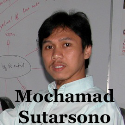7 THE BUSINESS HAT: WHERE IT ALL COMES TOGETHER As a professional in some discipline your perspective of the business of the organization was limited. You had knowledge of the purposes and objectives of your group but limited knowledge of the organization. As long as the organization was meeting its objectives there was not much […]
Posts Tagged ‘seven management hat’
SEVEN MANAGEMENT HAT [6] High-anxiety Hat
Managers also often wear the high-anxiety hat. These tasks are performed without any joy and become a painful reminder of problems managers face. These are challenging tasks that test a manager’s competence to function when faced with critical decisions. They may not occur often but they define the manager’s character and involvement. Fortunately there are […]
SEVEN MANAGEMENT HAT [5] The Action Hat
5 THE ACTION HAT: DOING THE WORK The action hat describes some of the real work of the manager. As a professional you have probably heard a lot about managers delegating. While managers do delegate many activities, there are others that require a full understanding and cannot be delegated. For the inexperienced manager these activities […]
SEVEN MANAGEMENT HAT [4] The People Hat
4. THE PEOPLE HAT: UNDERSTANDING HUMAN BEHAVIOR The people hat involves gaining an understanding of human behavior. The uniqueness of people needs to be taken into account in developing plans and in making decisions that involve people. Managers very quickly find themselves in a position to make decisions that have current as well as future […]
SEVEN MANAGEMENT HAT [3] The Leadership Hat
3 THE LEADERSHIP HAT: TAKING THE LEAD Leadership is the third component of managing. There are those who make a distinction between managing and leading. While leadership is vital, it is only one part of the management process. Leadership doesn’t work in isolation to meet organizational objectives. Keep in mind that we’re considering leadership as […]
SEVEN MANAGEMENT HAT [2] The Direction Hat
2. THE DIRECTION HAT: TEACHER, COACH, PROMOTER, INNOVATOR In providing direction, managers integrate knowledge, skills, attitudes, personal characteristics, and experience of the unit into an effective and efficient team. Providing direction involves managing the assigned and available resources within the limits of the organizational infrastructure. The resources include people, intellectual property, information, organizational attributes, technology, […]

 Posted in
Posted in  Tags:
Tags: 


















